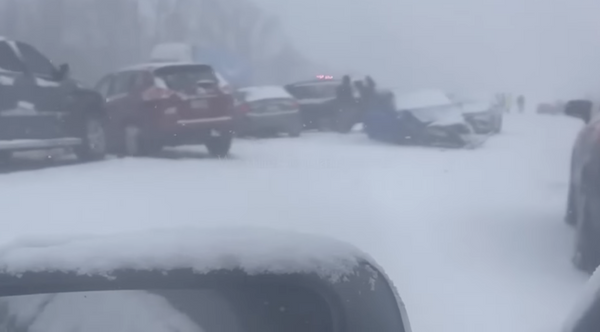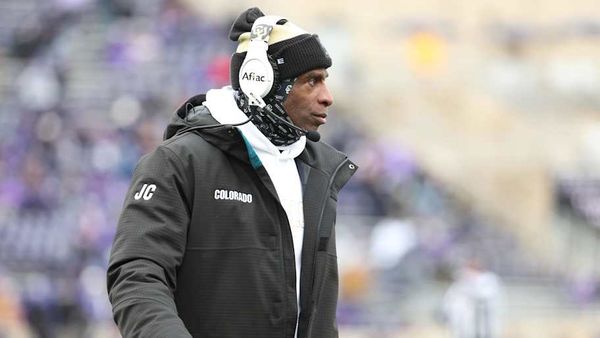
RPOs are, without a doubt, one of the most transformative additions to the Madden and College Football series. The ability to stall and read the defense before making a move adds a layer of complexity, allowing players to shift from the standard, predetermined run or pass plays. But while the abbreviation, Run-Pass-Option, might seem easy to understand, there’s a lot more that goes into executing it properly.
You might be thinking: How hard could reading the defense be? But add in factors like QB awareness, defensive formations, run variations, and you’ll understand why an entire guide is needed to understand the basic mechanics of RPOs.
This guide will serve as a one-stop solution for all your RPO needs. From variations to practice, we’ll be covering everything you need to know to get started.
How To Run RPOs In-Game
Before we dive into the semantics of RPOs, you first need to learn how to access RPOs in-game. Follow these simple steps:
- Open your playbook and go to Play Type
- Select the RPO tag, and browse the different types of RPOs
- Select the tag that you feel most comfortable with
A big part of selecting the right RPO is knowing what the tags in front of them mean. We already know CFB in general is a video game full of jargon, so the same applies here. There are a few key words you’ll want to know: Read, Peak, Alert, Walk, and Glance. We’ll explain these further in the article.
Another tip for mastering RPOs is to get familiar with them in practice before taking them online. The reason behind this is that these aren’t your standard pre-determined plays. You’ll need to practice reading the defense and keeping an eye on your receivers. Wait too long, and the handoff to your RB will happen automatically. So, take our advice and try it out in practice first.
Here are some teams you can use in practice since their offensive playbooks are loaded with different RPO variations:
- Oklahoma
- Texas
- Wake Forest
- UNLV
- ULM
- Georgia Tech
- Oklahoma State
Pick any of these to get familiar with the calls, and especially timing. Hesitate for a second, and you’ll find yourself getting sacked way too often. Now that we’re through with a general introduction, let’s take a look at what words like RPO Read and RPO Alert actually mean.
Understanding RPOs

The first step is to understand what an RPO is and how it works. RPO stands for Run-Pass-Option. You’ll usually have three options after the snap:
- Hand off the ball to the RB (automatic)
- Keep the ball with the QB and run (press and hold A/X)
- Keep the ball with the QB and then pass it (press the designated button before time runs out)
Some RPO tags don’t have the option to keep the ball with the QB and then pass it, but you’ll usually have all three options.
The main factor that makes RPOs such a strong tactic, but also risky, is the read. After the snap, you immediately have to read the defense’s movements. If they’re running forward for a blitz, make the pass to a WR. If they’re going for coverage (man or zone), you can choose between handing off the ball or running with your QB.
The time allocated before the automatic handoff and options available on the field are highly dependent on your QB’s Awareness stat in CFB 26. Higher-rated QBs will be able to spot WRs quicker and will be under less pressure on the read. However, pick a QB with average Awareness, and you’ll need to act twice as fast.
What Are RPO Tags?
RPO Tags are the words in front of RPOs in the playbook. We mentioned earlier that there are 5 important ones: Read, Alert, Walk, Glance, and Peak. Let’s break each of these down to resolve any confusion.
RPO Read
RPO Read can be assumed to be the original RPO strategy. You’ll have all three options when selecting read (hand off, QB keeper and run, and QB keeper and pass). After the snap, watch the R and P defenders. Your decision should be based on who they’re targeting to be able to pass it to a free receiver.
If you see them pressuring both your WR and RB, keep the ball with the QB and run. This is especially useful if you have a QB with good speed to get some good yardage. If you want to keep the ball with the QB, make sure to press and hold (A/X) to cancel the automatic hand off.
RPO Peak

RPO Peak is a more advanced version of RPOs, where it’s high-risk, high-reward. Instead of going for a short pass, your receiver will take a vertical run deep into the opposing side. If the defense is prioritizing your WR and RB, you can pass the ball deep for a vertical run. This is probably the best way to gain an explosive amount of yards, but it opens you up to interceptions.
RPO Alert

If you prefer a more run-focused play, you might like RPO Alert. This play is quite similar to your traditional run plays, except you still have a receiver running a set route. RPO Alert is based on reading the defense before the snap happens. The idea is that if you see a zone that isn’t being covered, you can hot-route your receiver to run there.
As soon as the snap happens, hold the ball and pass it once your receiver is in place. The receiver will also be able to spread the defense, as the opponent will send someone to cover him. In that case, you can make the handoff for an easy yard gain. This tactic requires a lot of skill and quick decision-making, though, so keep practicing.
RPO Walk
CFB 26 is a game of confusing your enemy, and that’s exactly what RPO Walk achieves. RPO Walk has two options: Either make the hand-off or opt for the QB pass. However, there’s a twist. During the handoff, the QB holds the ball for an extended period of time before making a move. The RB also buys time for your QB to read the play.
This not only gives you more time to decide, but also stresses the defense to make the first move. If they try to blitz you, you can commit to a long pass over them, especially if you choose a hot route. If they go for zone coverage, you can try to run for free yardage. The only difference between Walk and Read is the time before the handoff. Wake Forest is renowned for calling this play to catch unsuspecting teams off guard.
RPO Glance
Our final tag in CFB 26 is RPO Glance. RPO Glance means your WR won’t run a vertical route, but will rather circle behind a defender, running inwards. This puts the pressure on opposing linebackers as they can either cover the WR or charge for a sack. Either way, you can get a good read and choose appropriately.
If the defense takes too long to make a decision, make the hand-off to your RB, and let them take the ball forward.
Picking A Hot Route During RPOs

We’ve covered all the important tags you’ll need to know to run RPO plays. There’s just one thing left to understand: hot routes (see also Smart Routes). Hot routes are emergency pass routes you set just before the snap to ensure an open receiver, in case everyone else is covered. Hot routes can commonly be seen in RPO Alert plays, where the QB reads the defense pre-snap and has an Alert route setup for easy yard gains.
Since hot routes are picked pre-snap, they’re difficult to counter and can come as a surprise to many players. You can manually change the run route for your WR to make some creative plays. However, not all plays can include hot routes. RPO Alerts have built-in hot routes, depending on the read, but with traditional calls, you’re looking for streak or fade runs.
The different types of hot routes are Slant, Bubble, Hitch, Glance, and Quick Out. All of these are customizable and are designed to counter or avoid a particular defense. You can try out all these different tactics one by one to see which fits best with your playstyle.







